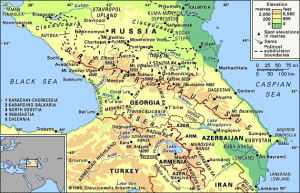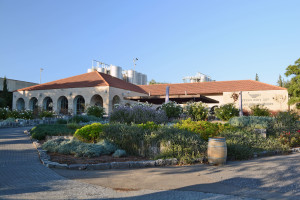Today we have a guest post written by David Glancy, MS, CSS, CWE. David dives into the ancient origins of wine and beer, and tells us about an upcoming event at his San Francisco Wine School. Read on!
Archaeologists have never been so cool. Dr. Pat (Patrick McGovern) is the Scientific Director of the Biomolecular Archaeology Project for Cuisine, Fermented Beverages, and Health at the University of Pennsylvania Museum in Philadelphia. He is often referred to as the world’s leading archeologist of fermented beverage, a career path my high school counselor failed to mention. When he’s not in his office at the University of Pennsylvania he is often wandering the Caucasus from Russia to the Middle East, or exploring a tomb in Egypt or a new dig in some remote mountain in China. And between all of these places he has found the oldest scientifically verified fermented beverage and wine (for now). Who knows what else he might find as he keeps digging.
That beer is old! In 2004 Dr. Pat and his colleagues documented the oldest fermented beverage. They carbon dated and DNA tested scrapings from pottery shards. It turns out that China’s thirst for beer is not new (#1 beer consuming nation). This beer dated back to 7,000 BC and was found at a Neolithic Chinese site called Jiahu. It is in southwestern Henan Province, China, on the east slopes of Fuliu Mountain. It was a grog made from rice, grapes and/or hawthorn fruit, and honey. Sam Calagione, brewer/owner of Dogfish Head Brewery in Delaware has made an interpretation of this ancient brew with Dr. Pat as a consultant.
The birthplace of wine made from grapes seems to be from the Caucasus. The Greater Caucasus stretch from Russia through the Georgian Republic to Armenia and Azerbaijan with stops in between. The Lesser Caucasus include Turkey and Iran, but ancient winemaking seemingly wandered from there to the Mediterranean with noted production in modern day Iraq, Lebanon, Israel, Jordan and Egypt.
Dr. Pat and his colleagues found the oldest wine, too. Once again, they were digging, scraping and lab testing. The wine residue they found dated back to 5,400 BC and was found at another Neolithic site (Hajji Firuz) in the northwestern Zagros Mountains of Iran. Six jars of the same shape, each with a volume of about 9 liters, were found lined up and set into the floor of a “kitchen” in a square mudbrick house.
Here is an overview of several of the wine producing countries of the Caucasus and Middle East.
- An Armenian Wine Renaissance is under way. There are over 100 grape varieties being grown today in Ararat, Armavir and other regions of Armenia but much attention is being paid to an ancient variety, Areni Noir. Grape growing and winemaking were minimal after Armenia’s independence from the former Soviet Union, but today small producers are breathing new life into the industry from Armenian nationals to flying winemakers like Paul Hobbs.
- Georgia has over 500 grape varieties being grown today and the industry is growing. By far the most widely planted variety is Rkatsiteli, a white grape. There are also several variations of a white grape called Mtsvane. The leading red grape is Saperavi. Wine is made in Kakheti and many other regions of Georgia.
- Lebanon has continued to make wine despite many years of warfare. Winemaking has been practiced in the Bekaa Valley for over 6,000 years. There are roughly 40 wineries and Chateau Musar is one of the most famous. Many international grape varieties are grown here along with the local Obaideh and Merwah.
- Israel also has produced wine for thousands of years though most of their 100+ wineries started in the last few decades. The five official wine regions are Galilee-Golan, Shomron, Samson, Judean Hills and Negev. Production has shifted from white to red wine from many varieties including Bordeaux and Tuscan grapes.
- Palestine is producing wine against all odds. There is minimal production despite thousands of years of history of growing grapes here. The few vineyards are in the area around Bethlehem and Hebron in Palestinian territories between Israel and Jordan. Baladi, Dabouki, Jandali and Hamdani grapes are the main focus.
- Turkey largely focuses on indigenous grapes. Sultaniye, Öküzgözü and Bo€azkere grapes are the most widely grown but Shiraz is also widely planted. There are over 1 million acres of vineyards in this large country but a good deal produces fresh and dried fruit, not just wine. There are over 600 unique grape varieties here and the majority of the vineyards are in the region of Thrace, along the Sea of Marmara, near Greece and Bulgaria.
All of these topics and more will be covered in depth at the upcoming Cradle of Wine Civilization Event at the San Francisco Wine School, to be held in South San Francisco on March 13. The day’s events will include 4 seminars, 14 panelists and speakers from around the world, wines from Armenia, Egypt, Georgia, Israel, Jordan, Lebanon, Palestine, and Turkey; a multi-cultural lunch with the winemakers, walk-around grand tasting, and an ancient brews happy hour. Click here for more information!



Pingback: Exotic Wine Travel | Trendsetter: Vahe Keushguerian From Armenia